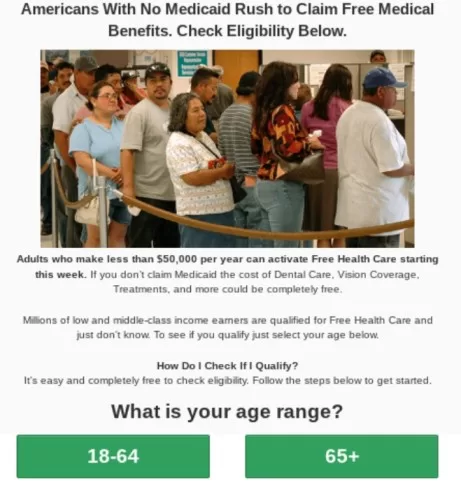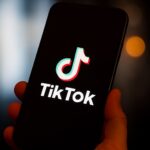A viral video promoting a questionable $6400 health subsidy has been circulating online, sparking confusion over whether this offer is real or a scam. With medical costs soaring, a direct cash subsidy to pay for insurance sounds appealing. However, before providing personal information, it’s essential to scrutinize the legitimacy of such claims to avoid becoming the victim of fraud. This article will uncover the truth about the $6400 health subsidy and empower readers to protect themselves from predatory scams.
What Exactly is the $6400 Health Subsidy?
The $6400 health subsidy refers to a supposed government program that reputedly provides direct cash assistance to individuals to pay for health insurance. According to a widely circulated video, individuals can call a special hotline number and register on a website to have $6400 deposited directly into their bank account. This money is pitched as an easy solution for covering rising medical costs and insurance premiums.
However, as savvy consumers know, when something seems too good to be true, it usually is. The $6400 health subsidy has all the hallmarks of a scam designed to steal money and personal data from vulnerable individuals. But how can you be sure?
What Red Flags Indicate the $6400 Subsidy is a Scam?
While free money sounds appealing, some clear warning signs indicate the $6400 offer is fraudulent:
- The website is not a .gov site or affiliated with an official government health program.
- Government subsidies don’t provide direct cash payments without eligibility requirements.
- No health agencies have advertised such a generous subsidy.
- Scammers often impersonate government officials and use urgency to pressure victims.
- Once users register, they never receive the promised funds.
Let’s explore why this offer fails the sniff test and does not pass muster as a legitimate government subsidy program.
Is the $6,400 Health Subsidy Real or a Fake Scam?
As medical costs continue to rise, many struggle to afford health insurance and desperately need financial assistance. Therefore, when a questionable video surfaced online touting an easy $6,400 health subsidy, it quickly gained traction and raised hopes. However, is this offer genuine, or is it an insidious scam designed to steal money and personal data from vulnerable individuals? Upon closer examination, the evidence overwhelmingly shows this supposed subsidy is indeed a fraudulent scheme.
First and foremost, the website and hotline number promoted in the video are not affiliated with any government agency or program. Additionally, legitimate government subsidies require extensive application procedures and eligibility verifications – not merely registering on a third party website. Furthermore, no health department or agency has advertised or confirmed the existence of such a generous cash payout program.

Moreover, scammers frequently impersonate government officials and use pressure tactics or unrealistic promises to manipulate victims. Another clear red flag is that none of the individuals who registered on the site actually received the promised $6,400 deposited into their bank account. In contrast, valid health subsidies like Medicare and Medicaid provide services and coverage to approved applicants – not direct cash assistance.
In short, this offer of $6,400 Health Subsidy is a scam and lacks any credibility or veracity. People must educate themselves to recognize and reject these deceptive ploys. By staying vigilant and cautious, we can protect our interests and resources from those who seek to exploit healthcare challenges for unlawful gain.
How Do Official Health Subsidies Really Work?
Contrary to the $6400 video’s claims, recognized health subsidies like Medicaid and Medicare do not deposit cash directly into individual’s accounts. These programs have strict eligibility requirements based on income, age, disability status or other criteria.
Applicants must submit extensive documentation and undergo an approval process. Those accepted obtain medical coverage or services – not direct monetary assistance. Valid government websites provide accurate details on real subsidy programs, rather than social media videos making questionable claims.
In short, the $6400 subsidy lacks the characteristics of regulated government health relief programs, exposing it as an outright scam.
Who is Behind the $6400 Health Subsidy Scam 2023?
The $6400 subsidy first gained attention when a video surfaced on social media showing a woman asserting she called a hotline and received direct health care subsidy payments. The video went viral, racking up millions of views and sending many hopeful victims to the shady website.
It appears sophisticated scammers are behind the campaign. They aim to capitalize on people’s needs by pretending to offer an easy solution. But their actual goals are identity theft and stealing data to commit fraud.
By understanding common scam techniques, citizens can recognize the $6400 subsidy represents another predatory scheme rather than real government relief. Avoiding participation protects against financial loss and identity crimes.
Does the Website Provide Any Legitimate Services?
The website itself offers no legitimate services and solely functions to collect user data for criminal purposes. It falsely promises applicants will receive promised funds after completing registration forms detailing sensitive personal, health, income and insurance data.
In reality, no such subsidy exists, and users will never receive the touted $6400 payout. The site represents a phantom portal set up by scammers to harvest information for financial fraud and identity theft. All contact information provided connects back to the criminal entities behind the scam.
Why Do Scammers Target Health Subsidies?
Healthcare scams have proliferated because medical costs are a prime concern that scammers leverage to exploit vulnerable individuals. By pretending to offer easy financial assistance, they convince victims to hand over valuable personal data and money.
Stealing identities allows fraudsters to unlawfully bill Medicaid, Medicare, and other health programs. Meanwhile, victims are left to deal with the fallout of stolen information and the costly burdens imposed by identity theft.
How Can Consumers Protect Themselves from Subsidy Scams?
The rise of sophisticated digital scams requires vigilance to keep personal and financial information secure. Here are some best practices:
- Verify legitimacy before providing data to any website or individual.
- Consult official .gov sites for valid health subsidy programs.
- Contact health and human services agencies with any questions or concerns.
- Ignore pressure tactics pushing quick actions.
- Watch for too good to be true offers and urgent demands for money or data.
Stay proactive and skeptical to avoid subsidy scams. Check trusted sources rather than third-party videos or websites spreading unverified claims. Protecting data, money, and identity should be the top priority.
The True Cost of Healthcare Subsidy Scams
While the $6400 subsidy scam tempts with easy cash, it can actually extract a high cost if victims fall prey. Beyond losing money, people may suffer identity theft, damaged credit, or compromised accounts. Stress, shame, and anger often plague those scammed when realizing their trust was violated.
Time, money and effort will then have to be expended to recover from fraud damages. And the scammers profit off the hardships they inflicted, often moving on to repeat schemes against other unsuspecting victims.
By learning to identify and reject deceitful offers, people can keep control over their resources and personal information. Avoiding subsidies scams prevents resources and energy from being diverted to recover from fraud.
How to Identify Other Healthcare Scams
While the $6400 subsidy scam is particularly brazen, many other healthcare frauds exist consumers should beware of:
- Fake free health screenings to steal insurance info for identity theft
- Phishing emails claiming you must validate ACA information
- Calls demanding payments for fake ACA non-compliance bills
- Uninsured medical discount plans that fail to deliver promised benefits
- Inflated medical equipment costs billed to Medicare
Stay vigilant for any offers tied to healthcare subsidies, changes, or updates demanding immediate action or money.
How Can Individuals Access Legitimate Health Subsidies?
While fraudulent offers should be avoided, many government resources exist for those eligible for healthcare financial relief:
- Medicaid provides essential coverage for millions with low incomes.
- Medicare assists those 65+ or with certain disabilities.
- The ACA offers income-based subsidies for insurance plans.
- CHIP gives children of ineligible Medicaid households access to health services.
Consult official state and federal program websites to access valid information on application requirements and enrollment processes. Legitimate government subsidies will never promise easy money through questionable third-party websites or videos.
Fact Check: Is the $6400 Health Subsidy Worth the Risk?
In conclusion, substantial evidence shows the viral $6400 health subsidy video presents a fraudulent offer rather than genuine government relief. While needing help with medical costs is real, this scheme will only exacerbate rather than solve financial problems. Before pursuing any subsidy program, undertaking due diligence is essential.
Learning to identify and sidestep scams allows consumers to focus time and energy on verified solutions rather than risky offers. Protect yourself by relying on legitimate sources like official agencies and experts. Don’t let scammers profit from desperation or lack of healthcare access. Make smart choices and avoid traps promising easy cash, which often extract a higher price.
| Claims: | $6,400 Health Subsidy |
| Claimed by: | Anonymous Social Media Profile (Facebook) |
| Safe or not: | Not Safe |
| Fact Check by Shoppersvila: | Fake |
If you have any questions or want to tell us about your experience, just leave a message in our Comment Box. We’re here to help with any problems you might have.
Frequently Asked Questions (FAQs)
1. Is the $6,400 health subsidy real?
No, the $6,400 health subsidy is a scam. There is no legitimate government program providing this type of direct cash payout for healthcare.
2. How do I claim the $6400 health subsidy?
You cannot legitimately claim this subsidy, as it does not exist. The video and website promoting it are fraudulent.
3. Is the $6,400 health subsidy legit?
No, this subsidy is a scam designed to steal personal information and money. No government agency confirms or provides a $6,400 health subsidy payment.
4. How do I apply for the $6400 health subsidy?
There is no way to legitimately apply for this subsidy, as it is fictional. The website collecting applications is a scam operation.
5. What are the $6,400 health subsidy eligibility requirements?
There are no valid eligibility requirements, since this subsidy does not exist. Any website listing requirements is falsifying information.
6. How do government health insurance subsidies really work?
Legitimate subsidies like Medicaid and ACA require applications, documentation, and eligibility verification. Approved applicants get healthcare coverage, not cash.
Tags: $6400 health subsidy reviews, complaints, application form, real, wikipedia, eligibility, fake, genuine, scam score, legit, Authentic, legal, fake or real, reality, contact number.









































